Unemployed Iranian Municipal Worker Resorts To Self-Immolation

A municipal worker in the religious city of Mashhad resorted to self-immolation within the premises of an administrative building after facing unemployment.

A municipal worker in the religious city of Mashhad resorted to self-immolation within the premises of an administrative building after facing unemployment.
ILNA news agency has identified him as Haji Ghadir Arab Teimouri, a 42-year-old worker employed by Mashhad Municipality.
The incident unfolded on Thursday, when Arab Teimouri, with a commendable 19-year employment history in the regulatory affairs of the Parks Organization, committed an act of self-immolation.
According to ILNA, the worker found himself unemployed under circumstances described as "uncertain reasons," leading to his suspension.
As of the latest update, Arab Teimouri is undergoing treatment at a hospital, where he is reported to have sustained 35% burns. His condition is labeled as "dangerous" due to physical complications and underlying health issues.
This incident sheds light on a growing concern for workers' suicide. Notably, two contract workers of the Chovar Petrochemical Company in Ilam, resorted to self-immolation on December 21 following the announcement of a mass layoff of workers within the petrochemical plant.
The primary factors contributing to the alarming trend of worker suicides in Iran are reported to be challenging living conditions and the impact of widespread job layoffs. Within a span of less than two years, six workers within the Chovar Petrochemical Company alone have taken their own lives in response to the distressing circumstances of layoffs.
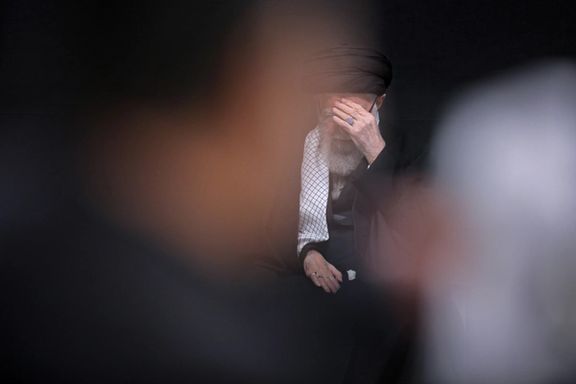
At the end of 2023, former high-ranking Israeli and American officials warned of the consequences of not countering Iran's escalatory tactics in two Op-Eds.
Naftali Bennett, former Israeli Prime Minister, and John Bolton, former US National Security Advisor and veteran diplomat, have both called for closer cooperation between US and Israel, and military strikes at the heart the Islamic Republic of Iran’s military-industrial complex on Iranian soil.
Bennett and Bolton serve a warning to the world, particularly the current Biden administration, that Iran’s expanding nuclear program and the armed proxies of Iran’s Shia Imperium to destabilize the region. They argue that it is imperative for both the US and Israel to take direct military action against Iran. They emphasize that it is high time for US and Israel to destroy Iran’s Shia Imperium’s arsenal manufacturing infrastructure as well as any other infrastructure that help sustain their escalatory attacks against Israel, the US forces in the region, and the commercial maritime navigation.
Such a call for action is not the screaming of two traditional stalwarts of military action against Iran in a vacuum. Iran-backed militias’ attacks on US bases over the past ten weeks have escalated to such a degree that President Joe Biden had no choice but to order back-to-back “measured” retaliatory strikes against these armed proxies, first on 27 October. Nonetheless, even within Biden’s administration many believe that the President’s response has been less than adequate. In fact, credible reports do indicate that Pentagon top brass are frustrated with Biden’s failure to retaliate against the Iranian backed militia with vehemence and strength.
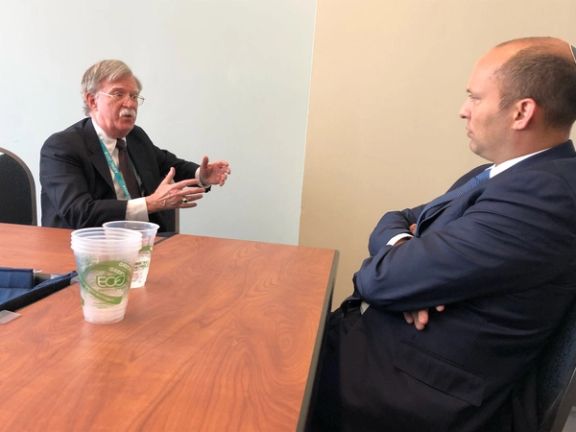
Biden’s “Strategic Patience” towards Iran
Since January 2021, Biden’s administration has pursued a policy of strategic patience towards the Tehran regime. Strategic patience is all too familiar a device of national security to Biden, his national security advisor, Jake Sullivan, and his CIA chief, William Burns. Under Barack Obama, they all served an administration that did particularly adhere to “strategic patience” vis-à-vis North Korea and made a point that Obama’s “strategic patience” was totally different from that of President Richard Nixon’s during the last phase of the Vietnam War. Yet, the Syrian civil war and the rise of ISIS in Iraq and the Levant as well as the Taliban’s successful resurgence under President Obama proved to be catastrophic.
Biden’s “strategic patience” is pentagon shape in dimensions. First, it has sought to disengage from the Middle East, i.e., withdraw troops and installations to the minimum possible, and respond to proxy attacks on the remaining US forces “proportionally”. Second, it has attempted at striking formal or informal agreements with rogue (state and non-state) actors to contain them, such as negotiations with Iran for an informal agreement over its nuclear program. Third, it seeks to incentivize regional allies to pursue a similar policy with the said actors. Fourth, it intends to closely tie regional US allies through security arrangements for self-preservation against rogue (state and non-state actors); and fifth, actively disregard failed attacks or provocative bravados by rouge state and non-state actors against US forces in the region. The aforementioned dimensions have been addressed under “Support De-Escalation and Integration in the Middle East” per “National Security Doctrine (October 2022, 42-43) in broad terms. However, the administration’s practice of “strategic patience” has achieved neither the terrorism prevention objective, nor has it attained by any degree the goals of “greater stability, prosperity, and opportunity for the people of the Middle East”.
The follies of Biden’s strategic patience towards the Iranian Shia Imperium only become abundantly clear when it is stacked against the staggering number of 151 attacks launched by Iran’s Shia Imperium against US installations in Iraq and Syria between January 2021 and 17 November 2023. Since Hamas’ attack of October 7, there have been more than 100 attacks by Iran backed proxies on US bases in Iraq and Syria. In return, the US retaliatory response does hardly amount to half a dozen strikes against the Iran-backed proxies.
Biden’s recent retaliation against Iran-backed proxies pales totally when compared with “the alleged Israeli targeted master stroke” that eliminated IRGC General Razi Mousavi in Syria on December 25. As to Mousavi’s value as a target one shall suffice to note that he was a right hand man to Qasem Soleimani, the IRGC top general and a mastermind of paramilitary and asymmetrical warfare, dispatched by the Trump administration in a drone attack in January 2020.
In fact, Biden’s response has been interpreted as a woefully inadequate gesture when viewed against the hundreds of brazen attacks launched against US troops over the past two years. Moreover, Iran’s proxies might have very well viewed Biden’s response as a feeble one when compared with another “alleged” December 29 Israeli airstrike that dispatched 11 senior IRGC commanders near Damascus International Airport. Whilst one may never know the type of intelligence that led Israel to such targeted attacks of such highly valuable Iranian assets, one can fairly speculate that the eliminated individuals did advise the same armed groups that have attacked US forces in Syria and Iraq since 7 October, not to mention Hamas, over the past few years. It is true that Trump administration’s killing of Soleimani did not stop Iran’s proxies from attacking US installations in the region, but it is also a fact that the Iran Shia Imperium has struck US forces with far more frequency under Biden than it ever did under Trump.
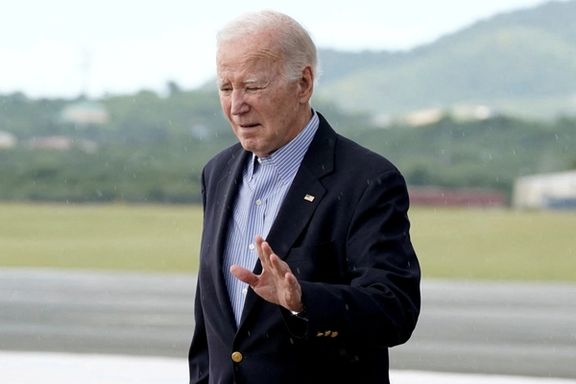
Iran’s Shia Imperium: The Matrix of Taking Advantage of Biden’s Strategic Patience
Iran-based analysts have been keenly following Biden’s staunch adherence to “strategic patience.” In fact, they have been developing different models to anticipate US reactions towards Iran’s provocations from early 2021. These models, found in the form of matrices published in Iranian “academic journals,” are significant as some have been penned by IRGC’s Imam Hossein military university graduates. All the said analysts have close connections to Iran’s foreign policy and national security decision making centers. On aggregate, these analyses place the pentagonal dimensions of Biden’s “strategic patience” at the core of their projections and seek to predict the trajectory of US-Iran “relations” until January 2025. Though almost all the said studies were published between 2021 and 2022, their proposed matrices do at once count on Biden administration’s commitment to “tension de-escalation with Iran” (strategic patience), its determination to arrive at some informal agreement over Iran’s nuclear program, and its focus to contain China.
Interestingly, they all believe, in so many words of course, that Iran Shia Imperium can prove itself useful to China and Russia by distracting US and its allies from theatres such as Ukraine and the South China Sea where Russia and China find themselves the target of increased pressure from the US and its allies. The papers are certainly “ambiguous” as to how this service can be rendered but it is hard to imagine absent of military skirmishes by Iran’s armed proxies any such distraction could have been given material effect.
The Biden administration seems to have read the wrong tea leaves when it developed its national security doctrine. The Tehran regime has now achieved the highest “weaponizable” capacity in its nuclear enrichment program, with an arsenal of long range ballistic missiles and an appetite to develop warheads. The Tehran regime may have been very much undermined through the trifecta of domestic instability, collapsed economy, and US-Western sanctions, but it has resolutely dragged itself through all these troubles by seamless fusion of systematic repression at home, and supplying cheap oil to China. In effect, Khamenei’s regime is not exactly on its knees yet.
The recent “alleged” Israeli elimination of key IRGC commanders in the region is testimony to Israel’s belief that Iran Shia Imperium has done its utmost to take advantage of Biden’s “strategic patience”.
Despite Hamas’ protestations that it planned and implemented 7 October attacks on its own, the question of Khamenei and his IRGC top brass foreknowledge of Hamas attacks is practically irrelevant. First, the Iranian regime has been a major military patron of Hamas. Second, for all intents and purposes, Iran Shia Imperium has proven a worthy ally of China and Russia in distracting the Biden’s administration. The US has now built up a behemoth military presence in the region by the advent of Israel-Hamas War. To deploy an attack nuclear submarine, an assault air squadron and two nuclear aircraft carriers with their accompanying battle groups into the Eastern Mediterranean and the Persian Gulf regions, in addition to all other bases in Qatar and Bahrain, is no small feat. With no concrete action against the Iranian military-industrial complex, as counselled by Bolton and Bennett, such a deployment shall only reassure Khamenei and his IRGC top brass that America is all bark and no bite. They may indeed make good on their promise of revenging General Mousavi’s elimination in the new year, an act that will certainly raise the stakes to escalatory heights in the region.
In this ever-unfolding game of chicken between US and Israel, on the one hand, and Iran and its armed proxies, on the other hand, the question is who will blink first when the stakes truly rise. Lest we also forget Prime Minister Netanyahu’s promise that whenever Israel decides that the stakes are sufficiently high enough, it may very well turn its attention away from a debilitated Hamas to the ever present and clear threat of the most powerful arm of Iran’s Shia Imperium in the region: the Hezbollah of Lebanon.
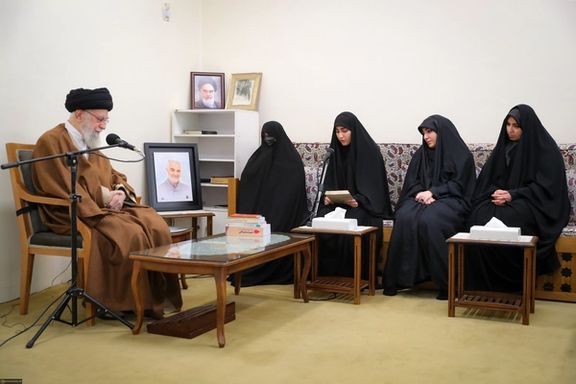
Iran's Supreme Leader praised the legacy of the slain Quds Force commander Qasem Soleimani in a meeting with his family.
Ali Khameini said Soleimani, killed in a US drone strike in Iraq in 2020, had boosted the regime's “resistance front” in the region, referring to Iran's proxies and their military actions in the region.
During the Sunday meeting, the Supreme Leader attributed the recent “resilience of Gaza” to the existence of the “resistance front”, consisting of proxies in countries including Lebanon, Iraq, Syria and Yemen, all of which receive huge financial and military aid from Tehran.
On October 7, Iran-backed Hamas in Gaza invaded Israel, killing 1,200 mostly civilians. It has resulted in a relentless assault from Israel in retaliation as the country vows to eradicate the Gaza militia.
While the regime celebrates the Hamas attack and claims it is a victory over the Jewish state, almost 70% of Gaza's 439,000 homes and about half of its buildings have been damaged or destroyed in retaliation.
According to the UN, an estimated 1.9 million Gazans have been displaced, seeking refuge in shelters or makeshift tents in the winter cold as the conflict continues to intensify.
Soleimani had been accused by then-President Donald Trump of actively planning attacks on American diplomats and service members, and he was instrumental in supporting and organizing militant proxy forces, including Lebanese Hezbollah and Iraqi Shiite militia groups.
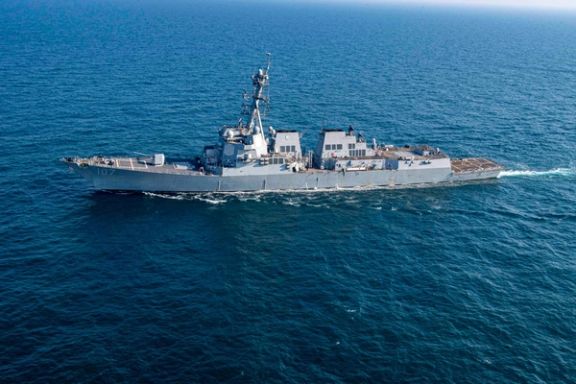
As Red Sea tensions rise, the US sank three Houthi boats on Sunday foiling a ship hijacking attempt, but Tehran vowed continued support for its militant proxies.
Two distress signals were sent out by the MAERSK Hangzhou within 24 hours, the first signalling a hit by a missile, and the second, indicating a hijacking attempt.
As the attack was unfolding, Iran’s Supreme Leader Ali Khamenei in Tehran said that the Islamic Republic should continue its support for the “Resistance Front”, referring to the regime’s proxy.
US Centcom said the attack marked the 23rd instance of aggression against international shipping since November 19.
With well over 100 attacks on US facilities in the Middle East since the Gaza war broke out on October 7, sparked by Hamas’s invasion of Israel, it is a rare action from the US which until now, has tried to avoid military clashes.
Following the Israeli military operation in Gaza, Iran’s Yemeni proxy announced it would be joining the war on Israel, targeting shipping in the Red Sea and surrounding area.
Attempting to force Israel to agree to a full ceasefire, missiles and drones have been targeting Israeli soil as well as international shipping and US interests. Following the US support of Israel’s right to defend itself in the wake of the October 7 attacks, which saw 1,200 mostly civilians murdered and 240 or more taken hostage, the US has come under further attacks in Iraq and Syria.
The escalation in the maritime route which accounts for around 12 percent of global trade and oil, connecting Asia to Europe, has led the US to form a more than 20-member international coalition in the face of the aggression, Operation Prosperity Guardian. Several shipping companies have either ceased activity or take longer routes, causing major delays and costs to journeys.
Denmark, the owner/operator of the latest targeted vessel, is the newest member of the coalition, though due to the sensitivity of the region, not all countries have openly stated membership.
Following the initial strike on the Singapore-flagged container ship which claimed it had been hit by a missile, the US Navy shot down two anti-ship ballistic missiles. No injuries were reported and the ship was still seaworthy.
But later, in the early hours of Sunday morning, a second distress call revealed four Houthi small boats attempting to hijack the ship, as they fired with small arms at the ship, getting to within 20 meters and attempting to board.
“A contract embarked security team on the MAERSK Hangzhou returned fire. US helicopters from the USS EISENHOWER (CVN 69) and GRAVELY (DDG 107) responded to the distress call and in the process of issuing verbal calls to the small boats, the small boats fired upon the US helicopters with crew served weapons and small arms,” the statement said.
“The US Navy helicopters returned fire in self-defence, sinking three of the four small boats, and killing the crews. The fourth boat fled the area. There was no damage to US personnel or equipment.”
Holding Iran accountable, British Foreign Secretary David Cameron said on Sunday that he had told Iranian Foreign Minister Hossein Amir-Abdollahian in a call that Iran should help stop the Houthi attacks in the Red Sea.
"I made clear that Iran shares responsibility for preventing these attacks, given their long-standing support to the Houthis," Cameron said in a X, adding that the attacks "threaten innocent lives and the global economy”.
Iran expert Jason Brodsky, said the latest US action was “a step in the right direction” in terms of deterrence but said “without more decisive action including against the IRGC, it won't alter the fundamentals of the deterrence deficit in the Red Sea”.

The leader of the Islamic Movement in Nigeria says Africa must draw inspiration from Iran's Islamic Revolution.
Sheikh Ibrahim Zakzaky, currently in Iran, said in a recent meeting with Alireza Araafi, the director of religious seminaries in Iran, that “the Islamic Revolution continues under the leadership of Ali Khamenei.”
During a meeting held in October, Iran's Supreme Leader Ali Khamenei conveyed to Sheikh Ibrahim Zakzaky that "The Islamic Movement is expanding in Africa, Europe, and North America," mobilizing the global Shiite population.
Zakzaky, often referred to as Nigeria's Ayatollah, leads the Islamic Movement in Nigeria, a movement inspired by the Iranian Revolution, rejecting the authority of the Nigerian government. He currently faces imprisonment on multiple charges, including murder, culpable homicide, unlawful assembly, and disruption of public peace, as the government seeks to suppress the revolutionary movement.
Expressing support for Zakzaky's efforts to expand Shiite Islam in Nigeria, where approximately 50 percent of the population is Muslim, primarily Sunni, Khamenei acknowledged Iran's backing of Nigeria's Islamic Movement. The support is evident in recent energy talks, focusing on cooperation to address energy challenges, while also seeking the Nigerian government's collaboration.
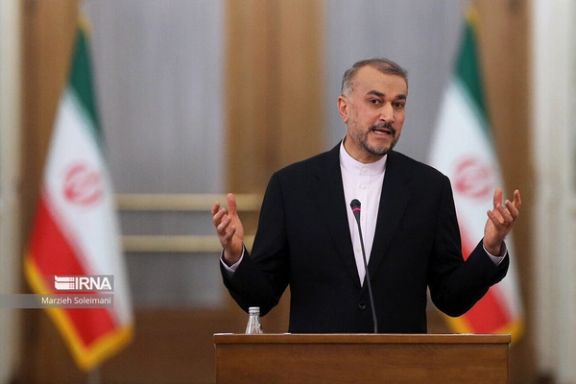
Iran's Foreign Minister criticized what he termed "coercive measures" employed by human rights institutions in their investigation of the 2022 protests.
In a meeting held in Tehran on Sunday, Hossein Amir-Abdollahian claimed that such measures “lack legal or legitimate justification".
In the wake of the unrest, the UN Human Rights Council initiated a fact-finding mission to probe the reported human rights violations in the aftermath of the widespread protests ignited in September following the death of Mahsa Amini in morality police custody.
Protesters were met with severe repression by Iranian authorities. Reports indicate the use of excessive and lethal force, over 500 killed and the arrest of tens of thousands of protesters and peaceful dissidents.
Amir-Abdollahian also claimed that a committee, led by President Ebrahim Raisi, has been established to investigate the 2022 protests. According to him, this committee signifies the "accountability and seriousness of the Islamic Republic in supporting human rights."
Human rights organizations are actively engaged in investigating the deaths of hundreds, including 69 children, during the protests. The primary focus of the investigations is to seek justice for victims and survivors of extrajudicial killings, mass arbitrary detentions, torture, and other serious abuses allegedly perpetrated by the Islamic Republic in response to peaceful demonstrations.
The lack of independence and impartiality in Iran's judicial system complicates domestic avenues for accountability, making it challenging to address alleged injustices and abuses within the country.